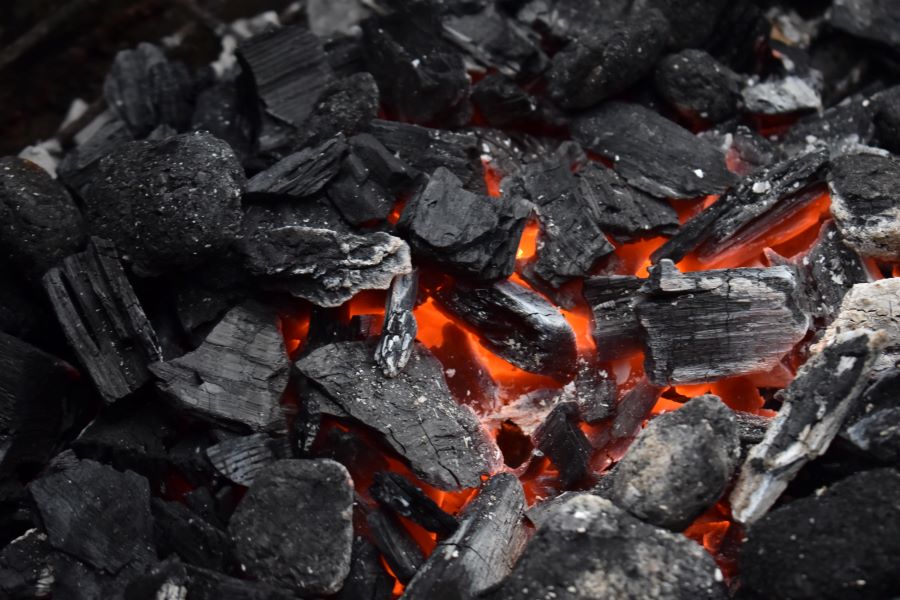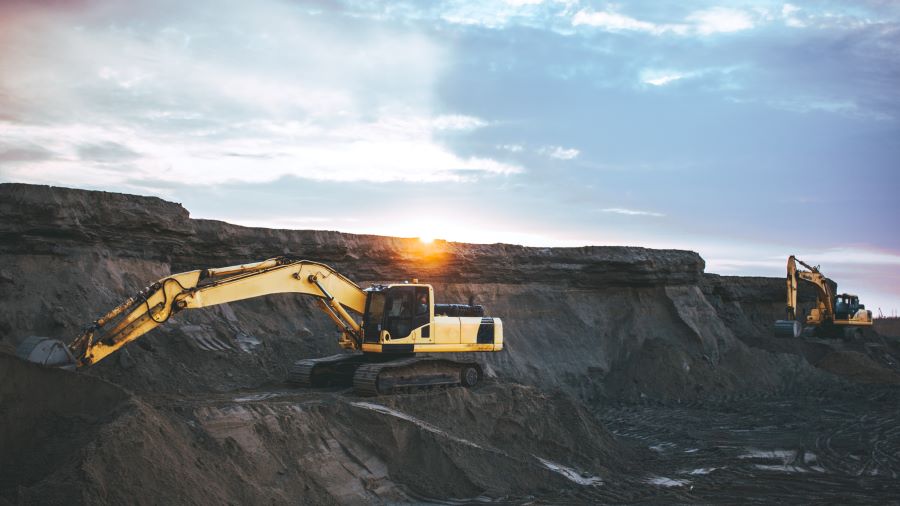Coal is a sedimentary rock, made up mostly of carbon and hydrocarbon molecules. It is these hydrocarbons that burn, reacting with oxygen to generate heat, light and carbon dioxide. Like all sedimentary rocks, coal formed over hundreds of millions of years from layers of materials and intense pressure. It is for this reason that we call coal a fossil fuel.
Coal formation is an interesting and important subject, as it can help us understand our planet™s early history.
Coal Formation Process
In the Carboniferous period, 360 million – 290 million years ago, a lot of Earth™s land was covered with swamps and forests. The plants that grew in these early climates were huge, such as the giant club moss, thought to have grown to over 40 metres tall and 2 metres wide. Like our modern plants, these ancient plants also used photosynthesis to create energy from water, carbon dioxide and sunlight. This energy was stored in their stems and leaves as sugars or hydrocarbons. As generations of these plants died and decomposed, they accumulated into peat bogs.
This process repeated over millions of years led to the layering of sediments, soils and the weight of these layers, as well as possible tectonic plate shifts, put intense pressure and heat on the early plant layers. The ancient plant matter hardened under pressure and high heat into the sedimentary rock we now know as coal.
But the energy stored by the plants while they were alive is still present in hydrocarbon chains, which is why coal has been considered a powerful fuel. This energy, locked away for millennia, is what is released as heat and carbon dioxide during coal combustion. The amount of pressure and heat that acted on the plant matter over this length of time determines the type of coal present today.
Stages of Coal Formation

While we generally think of coal as a singular material, it is actually a general term used to describe carbon-rich fuel. There are several grades or ranks of coal found all around the world and at different depths. The grading of each coal depends upon its density and carbon content, which is determined by how many millions of years has been compressed and heated underground.
Ancient Plants which died in the swampy regions during the Carboniferous period accumulated into peat bogs. There are still peat bogs today, and peat (sometimes called peat coal) has often been cut and dried for use as a fuel source for cooking and heating homes.
There are four main ranks or classifications of coal:
- Lignite is the first stage of coal formation after sediment compresses peat. It is soft and brownish-black coal that has the lowest energy content and the highest moisture content of all coal types. Lignite coal contains 25%-35% carbon, giving it the lowest energy content of all coal. This is because it is a relatively young material, around 60 million years old.
- Subbituminous coal is soft and dull-black in colour. This low-grade coal contains only 35%-45% carbon and holds 10-25% water. While sub-bituminous coal has a lower heating value than bituminous coal, it also has a very low sulfur content, sometimes as low as <1%. It is between 70 and 100 million years old.
- Bituminous coal is dense and medium-grade coal that has a higher heating value than lignite and sub-bituminous coal. Bituminous coal contains 45-86% carbon and is between 100-300 million years old.
- Anthracite is hard, shiny, and non-porous coal that burns slowly with a blue flame and little smoke. It is the hardest and densest form of coal, containing 86%-97% carbon. Anthracite coal is 300-365 million years old, the oldest combustible coal.
After Anthracite has been compressed for over 365 million years, it becomes the oldest, densest and hardest coal form: graphite. Graphite is technically coal because it is the final stage in coal formation.
Different Coal Purposes
There are three main uses for coal today. The most commonly used type of coal is Bituminous coal, which is used for all of the following.
Domestic Heating: Coal is still used as a domestic heat source in homes around the UK. In 2021, 480,000 tonnes of coal were used for domestic heating.
Metalworking: Coal is processed into Coking coal, which is then burnt at a very high heat suitable for melting iron ore. This ore is used to make iron products such as cast iron and steel.
Steam-Electric Power Generation: Coal is burned under vats of water to generate steam. The pressurised steam pushes turbines, which spin magnets to generate electricity. Only 1.5% of Britain™s electricity is now generated by coal burning, and ministers have set a goal for Britain to stop using this method altogether.
Is coal still being formed?
Coal formation is a continuous process lasting hundreds of millions of years. This is why it is known as a ˜fossil fuel™. If all of the peat bogs today were left to be buried under sediment forever they would go through the stages of coal formation and become Lignite coal, Subbitumious Coal, Bituminous Coal, Anthracite coal and eventually, Graphite. However, despite this continuous and natural process, coal is not a ˜renewable resource™, because of the millions of years it takes to form. If we continue to increase coal consumption at the rate we are today, global coal reserves will run out in 114 years.
As globally we use more coal each year, it is becoming important to find other sources of energy. While renewable sources of electrical energy are well-known, alternatives to coking coal are rarely discussed. Many across Europe are exploring ˜green hydrogen™ as a replacement for coking coal in the steel industry. Renewable solid fuels such as kiln-dried wood are becoming increasingly attractive options for domestic heating, as burning wood only releases the carbon dioxide absorbed during its growing period.
Coal Formation and Why it Burns
Because coal is the fossilised remains of ancient plants, it contains all of the carbon that they absorbed during photosynthesis in their lifetimes. It is this carbon that allows the coal to burn and release heat and carbon dioxide. We’ve discussed how coal is formed and the different types of coal. We’ve also explored the three main uses of coal today: domestic heating, metalworking, and steam-electric power generation. Finally, we touched upon the shift towards phasing out coal burning for electricity generation. In conclusion, coal is an important part of our past and continues to be an important part of our energy mix today.

